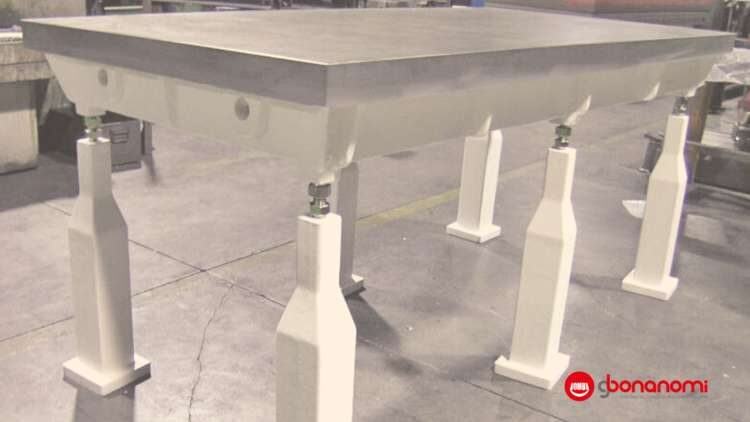Plan of Encounter, also known as Dressing Plates, are products made from precision engineering workshops characterized by a perfectly flat surface. They are used for different purposes, and because of this, they can come in various shapes and sizes.
In this article, we will look at what dressing plates are, the production process, their functions, and where to purchase them.
What are the Dressing Plates?
Dressing plates refer to a base whose superficies, usually made of G25/G30 gray cast iron or stone, is finely machined to ensure extreme flatness.
At a technical level, dressing plates consist of 3 parts:
- The upper face, also called the table, which is perfectly flat.
- The part underneath the board formed by ribs, useful for decreasing the weight and increasing the rigidity of the base.
- The feet, adjustable in height, on which the ribbed frame rests. Usually there are either 3 or 4 feet although more may be needed for large boards
Because the flatness of the board must last over time without deformation, it is machined with technologically advanced machinery and made from materials that offer excellent strength throughout the product's lifetime.
In terms of size, there are dressing plates of different sizes on the market, ranging from those a few centimeters in size to those reaching several square meters in width.
Cast Iron and Stone Dressing Plates: Advantages and Strengths
As mentioned, laminated cast iron with pearlitic structure is among the most widely used materials to produce dressing plates. Indeed, the material composition ensures enviable accuracy in flatness and great stability over time.
An excellent trade-off between wear resistance and solidity is also provided by stone sample tops, which are generally more expensive than the former because they are totally immune to oxidation. The stone table is not scratched by any temperature, and in both the short and long term, it is virtually impossible to deform it.
How Dressing Plates are Made

Dressing Plates are produced with great care and in different ways according to the required production needs: we recognize natural pattern forming, core box pattern forming, and, finally, EPS pattern forming.
The manufacturing process begins with the preparation of molds of the necessary sizes - modularity is a key feature to adapt to any construction layout - in which the cast iron is cast and then palliated. To eliminate internal stresses caused by the difference in thickness between the ribs and the plate, the bracket casting is let to cool slowly and then finished by milling and scraping operations. The different steps are essential to deliver a perfect product to the customer in terms of solidity and flatness.
Only after testing to ensure strict compliance with DIN 876 does the dressing plates leave the precision machine shop.
Dressing Plates: When They are Used
Dressing Plates are used for multiple functions although they are particularly appropriate for rectifying and grinding flat surfaces of mechanical parts by hand.
In this sense, the superficies to be adjusted is swiped on the dressing plate’s board, previously smeared with a very thin layer of coloring matter that has the purpose to highlight the parts that need to be removed. The chosen ink is, generally, Prussian Blue.
Furthermore, dressing plates are used to trace mechanical components of all shapes and sizes at any stage of the production process. Also not to be forgotten is the use in the thickness control phase and, in general, the verification of other precision instruments, with the surface of the top acting as a support for both the object to be checked and the verifying instrument.
Where to buy Dressing Plates
Bonanomi, precision mechanical workshop established in 1946, makes G25 or G30 Cast Iron Dressing Plates of all shapes and sizes.
The product, before being shipped to the customer, receives the certificate of conformity, guaranteeing compliance with DIN 876. In addition to production, Bonanomi provides installation and assembly services.
